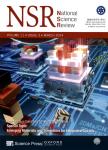Design strategies of highly selective nickel catalysts for H2 production via hydrous hydrazine decomposition: a review
Design strategies of highly selective nickel catalysts for H2 production via hydrous hydrazine decomposition: a review作者机构:State Key Laboratory of Catalysis Dalian Institute of Chemical Physics Chinese Academy of Sciences University of Chinese Academy of Sciences
出 版 物:《National Science Review》 (国家科学评论(英文版))
年 卷 期:2018年第5卷第3期
页 面:356-364页
核心收录:
学科分类:081702[工学-化学工艺] 081705[工学-工业催化] 08[工学] 0817[工学-化学工程与技术]
基 金:supported by the National Natural Science Foundation of China(21103173 and 21476226) the Strategic Priority Research Program of the Chinese Academy of Sciences(XDB17020100) the National Key Projects for Fundamental Research and Development of China(2016YFA0202804) the Youth Innovation Promotion Association of the Chinese Academy of Sciences
主 题:hydrazine selectivity H2 catalyst nickel
摘 要:Hydrazine, a widely used liquid propellant, has the potential to be employed as a hydrogen source in certain instances and has therefore attracted considerable attention; consequently, the complete decomposition of hydrazine with 100% Hselectivity under mild conditions has become the current research focus for catalyst design. In this review, the strategies for the design of efficient catalysts are summarized for complete hydrazine decomposition. The first part of this review introduces the mechanism of hydrazine decomposition, while the second part illustrates the key factors influencing the Hselectivity of nickel catalysts, including the effects of alloying, alkali promoter addition and strong metal–support interactions.Finally, the critical elements of catalyst design employed in industrial applications are analyzed.



